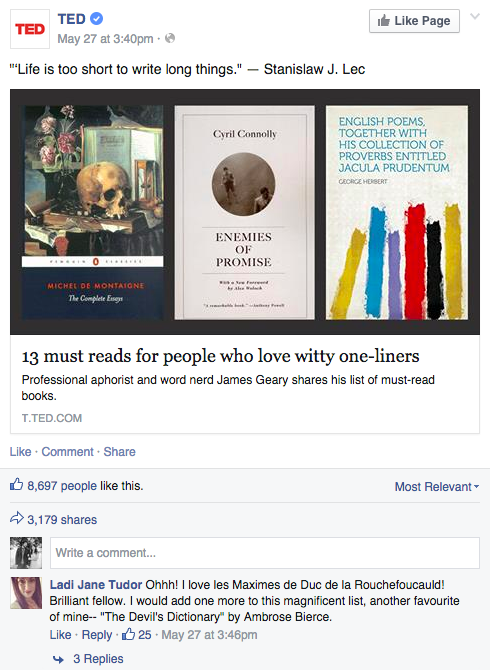The web today allows brands to make more personal and emotional connections with their customer base. Such connections will look different depending on who your audience is, what your offerings are, the channels your customers pay attention to, and many other factors.
And such connections are valuable. According to CEB research, “customers with strong connections to B2B brands have higher rates of consideration, purchase, and willingness to pay a premium” when compared with consumers with no brand connection.
Since emotional connectivity can play a large factor in a consumer’s purchasing decisions, establishing these types of connections between your brand and your audience becomes essential to cultivating a loyal customer base, growing earned media, and helping your organization stand out in your industry.
Malcolm Gladwell’s The Tipping Point cites a study which found that customer advocates are 70% more likely to be viewed as a source of reliable information and 50% more likely to generate content that can influence a purchasing decision.
Defining what an emotional connection with your customer base actually looks like is a crucial first step when building this higher level of rapport with your audience over time. Doing so will give you a type of North Star for how you want to cultivate relationships.
IDENTIFYING EMOTIONALLY CONNECTED CUSTOMERS ONLINE
To determine what emotionally connected customers look like for your company, start by identifying your most loyal customers and analyze what fuels their connection to your business. Think about how your ideal customer is likely to behave when interacting with your products or marketing efforts. Here are a few sample descriptors of brand loyalists:
- Only consider your brand regardless of price or competitors.
- Publicly recommend your products on social channels.
- Actively participate in your marketing campaigns.
- Quick to defend your brand from competitors or bad publicity online.
As you begin to look for your loyal customers and brand ambassadors, a measurable starting point can be found by analyzing your audience’s interactions on your social channels, review sites, blogs, and other communities. Often times, brand advocates will add thoughtful insights to the content that you publish on your social channels or mention your brand with their friends and audience.
For example, in this content shared by TED on their Facebook page, there are a few behaviors that can help identify what their emotionally connected audience looks like. Take special notice of the first comment on this post:

In this comment, Ladi references TED’s content and adds to the conversation by providing feedback with another recommendation which sparks further action from TED’s community. One comment doesn’t indicate an emotionally connected customer—but many interactions over time does and gathering these analytics can help you make more informed marketing decisions.
Your emotionally connected audience will consistently identify themselves by continuing to perform these actions in the form of social actions, product reviews, brand shout outs, and recommendations. Perhaps more importantly, they’ll remain customers. Once you have looked at your metrics and customer interactions, emotional connections will fall into one of the three categories below:
THE 3 TYPES OF PEOPLE WITH AN EMOTIONAL CONNECTION TO YOUR BRAND
Type 1: Shoppers in this category differ from your average customers because they frequently purchase your products or services and remain loyal to your business over time. These customers can be identified through transactional data and purchase history over a given time period.
Type 2: Individuals in this stage are not necessarily customers yet, but will actively seek ways to be involved with your brand, whether it be joining your loyalty programs, completing informational surveys, subscribing to company newsletters, or participating in your other marketing initiatives. Identify these brand contributors by diving into your tracking and analytics platforms.
Type 3: These loyal customers are the most vocal about your brand on social channels and other online networks. They go above and beyond by writing product reviews, giving public recommendations, and actively participating in your social channels, even defending your brand against criticism. It’s important to note that if they are performing these actions online, they are likely to be speaking positively about your brand offline as well. Find these loyal customers through your social analytics and by reading online review channels.
The key takeaway is that your best customers will continue to make purchases, talk about your products, and complete a variety of your conversion funnels naturally. Additionally, the more of these customers that your brand can nurture, the stronger results your word-of-mouth marketing will drive.
Identifying your rockstar customers is only the first step, it’s very important to generate more emotional connections with your brand and strengthen the connections you’ve already forged. Consider differentiating your marketing efforts by creating unique and valuable content that is original to you to better build a brand that stands out in your customer’s minds and emotions.
Keep your customers’ interests top-of-mind and recognize your most loyal fans. This can often be accomplished with a personalized public acknowledgement on social channels (like the one below), a special coupon for continually supporting your brand, or another distinctive memorable experience that delights your customers.

By recognizing what your emotionally connected customers look like and by striving to nurture these individuals through your ongoing campaigns, your brand will be in a better position to promote your efforts moving forward.
A version of this post originally appeared on Percolate blog.
This article was syndicated from Business 2 Community: What Does An Emotional Connection With Your Customers Look Like?
More Sales & Marketing articles from Business 2 Community:




